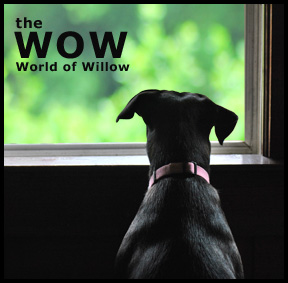 How great would it be if a simple handshake and introduction were all you needed to really get a feel for someone?
How great would it be if a simple handshake and introduction were all you needed to really get a feel for someone?
Well, even in the people world, it takes more than that. In my world of canine senses, that’s where rear end sniffing comes in! Truthfully, introducing old pets to new pets or even just to a friend or neighbor’s dog has a number of components which may help to make the furry friendship a healthy and long-lasting one.
Looking back on my recent introductions (numerous dogs, cats, horses, and chickens) the introduction to the chickens still gets a laugh out of me. It’s cruel of me, I know, but I can still recall how desperately I wanted to chase those two legged walking dinosaur-like creatures. What would I have done once I caught them, you ask? Only sniff them of course!
As a dog, meeting other animals can be extremely exciting, especially if we rarely get the opportunity to meet another of “our own kind.” This is where patience, practice, and careful observation from our owner plays a key role in introducing two unfamiliar animals.
Dog to Dog:
Most of us dogs love to make new friends. Not only does it encourage us to run and play, it’s mentally stimulating as well. Owners with a single dog need to put in an extra effort to socialize their Fido. If not, it’s common to see aggression toward other dogs.
Alright, so you have a potential new friend for your canine. Most importantly, keep us on a leash! We can get awfully excited meeting a potential playmate. Schedule the meeting for somewhere neither dog is too familiar with, “neutral territory.” This helps to reduce territory aggression from interfering in the new friendship. No, sorry, we don’t live by the “me casa es su casa” mentality. And if you can introduce us to only one other dog at a time, this helps keep us from feeling overwhelmed and outnumbered. 
Start off by walking both pets on a leash in proximity to one another. Walking us while we meet another dog allows us to physically get out any extra energy we may have and keeps us from focusing too much on the other dog. If you have a dog that is already getting excited, this is where it’s key to have some basic commands taught. Owners need to ask for a sit and every time your dog looks away from the other dog—reward it. Now you should bring some yummy high-quality/highly-motivating reward treats—your everyday milk bones won’t work here. Try cooked chicken pieces or jerky. As soon as we understand we’re rewarded for ignoring the other dog, begin walking us again—still rewarding for only good behavior.
Once both animals have gotten “it”, start walking closer to each other. Walk parallel in the same direction. Walk in a circle. If both dogs are giving positive behavioral signs, such as ears forward, relaxed open mouth, no hair raised along the back, no showing of teeth in an aggressive manner, then you can allow the dogs a brief period of contact on a short leash. As you probably know, we are going to sniff! Humans gather most of their information visually, however, as dogs, we use visual as well as our olfactory (smell) sense. Sniffing rear ends is common and actually tells us a lot about the dog in front of us, such as their sex, age and even diet!
Anyway, if the interaction was positive, reward both dogs. Continue bringing the dogs together and rewarding, gradually increasing the time. If any dog shows signs of aggression, remove them and ask for a sit/time out. Then begin again by rewarding for ignoring the other dog.
I have tried to simplify this process, making it easy to perform. I do understand that you may have an animal with special considerations, which you may need more information on. Therefore, I strongly encourage you to work with a knowledgeable trainer.
It may be tempting for you, just as it is temping for me to chase, to short cut this process and simply let the dogs work it out. I assure you that this not setting up your household for success. It also often times ends in injury or death (I have an faded scar on my back leg as a reminder). So take this advice from a dog and be patient!
Coming soon…
Making Friends is Hard to Do: Part II—Dogs to Cats (or chicken, goat, sheep or horse)
